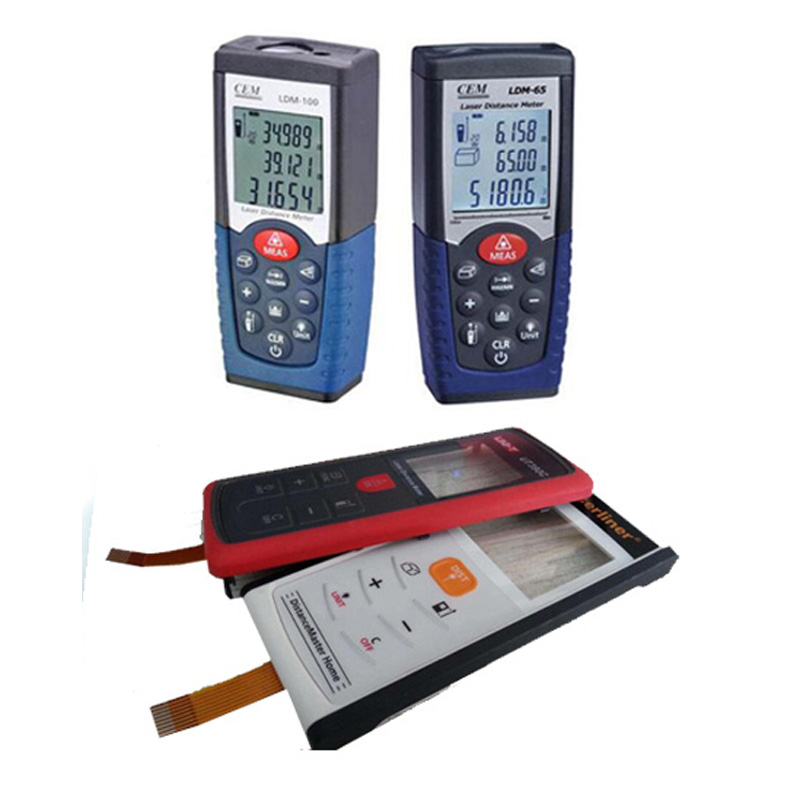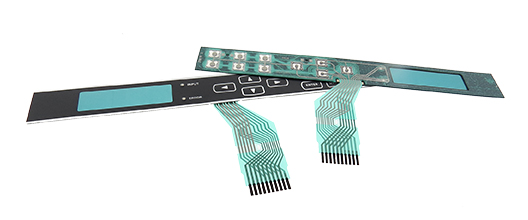The Production Process Behind Membrane Layer Switch: What You Required to Know
The manufacturing procedure behind membrane switches over combines careful layout, material option, and quality assurance. It starts with comprehending the details of membrane button design and proceeds through different stages, including product choices and printing strategies. Each phase plays a crucial function in making certain performance and toughness. Nonetheless, the complexities of layer building and the strenuous testing requirements might reveal insights that are not quickly obvious. What lies past these fundamental components?
Understanding Membrane Change Layout
Although membrane layer switches may appear easy initially look, their design involves complex factors to consider that assure capability and resilience. The layout procedure starts with a comprehensive understanding of individual demands, including the interface's intended application and environmental elements. Functional designs is a crucial element, as the design should help with ease of use while guaranteeing that tactile feedback fulfills customer expectations.Moreover, the layering of elements, such as graphic overlays, adhesive layers, and conductive traces, must be precisely crafted. membrane switch. This split setup not only influences the button's responsiveness yet likewise impacts its longevity. Focus is provided to the securing techniques employed to shield versus wetness and dust, which can jeopardize performance. In addition, layout considerations encompass aesthetics, where color pattern and visual quality improve individual experience. Ultimately, the layout of membrane switches over equilibriums functionality, customer experience, and toughness, guaranteeing that they meet the needs of various applications properly
Materials Made Use Of in Membrane Layer Switch Production
When choosing products for membrane button manufacturing, it is important to ponder both performance and longevity. The main materials include polyester and polycarbonate movies, which offer adaptability and stamina. These movies are typically covered with adhesive to guarantee proper bonding to substrates. Conductive inks, typically composed of silver or carbon, are essential for producing electric connections within the switch, permitting reputable operation.Additionally, a safety layer, such as a hard coat, is regularly applied to improve scrape resistance and long life. The choice of backing product, such as acrylic or foam, can substantially influence the button's tactile feeling and general customer experience. Numerous environmental elements, consisting of temperature level and moisture, should direct product option to assure peak efficiency in specific applications. Ultimately, the best mix of products adds to the membrane layer button's capability and life-span, making educated choices important for makers.
The Printing Refine: Creating Video and Text
The printing process in membrane switch manufacturing plays a considerable function in creating top notch graphics and message. Different graphic style methods are utilized to guarantee visual appeal and functionality, while mindful ink option approaches are crucial for durability and efficiency. Recognizing these components is essential for accomplishing finest results in membrane layer button style.
Graphic Design Techniques
Graphic layout methods play a vital role in the printing procedure of membrane buttons, as they define how graphics and message will eventually show up on the last product. Reliable visuals layout includes the strategic use fonts, formats, and colors to improve readability and aesthetic charm. Developers typically make use of vector graphics for scalability, making sure that photos stay sharp at numerous sizes. In addition, attention to contrast and placement is important, as it affects user interaction and visual quality. The consolidation of branding components, such as logos, need to be taken care of with like preserve brand name integrity. Generally, thoughtful visuals design methods add substantially to the functionality and appearance of membrane layer buttons, impacting individual experience and item performance.
Ink Option Methods
Picking the appropriate ink is important for attaining the preferred aesthetic quality and toughness in membrane layer switch production. Various ink types are used, consisting of solvent-based, water-based, and UV-curable inks. Each kind supplies distinct qualities, such as attachment, resistance, and adaptability to environmental factors. Solvent-based inks are frequently favored for their sturdiness and dynamic colors, while water-based inks are much more eco-friendly but may have limitations in adhesion. UV-curable inks give quick healing and durable efficiency. Furthermore, color matching techniques guarantee that the picked inks straighten with style specs. Inevitably, the option of ink should think about factors such as application method, substratum compatibility, and end-use demands to accomplish superior cause membrane layer switch graphics and text.
Layer Building And Construction and Setting Up

Material Choice Refine
A mindful option of products is essential in the manufacturing process of membrane switches, as it directly influences functionality and sturdiness. The main products utilized consist of polyester, polycarbonate, and different conductive inks. Polyester is commonly preferred for its exceptional resistance to chemicals and abrasion, making it ideal for extreme settings. Polycarbonate, on the various other hand, supplies remarkable clearness and effect resistance, which is helpful for applications needing exposure and toughness. Conductive inks, usually composed of silver or carbon, are vital for creating reliable electric paths. Furthermore, the option of adhesive products influences the general stability of the switch - membrane switch. Reviewing variables such as ecological exposure, responsive responses, and aesthetic requirements overviews makers in choosing the most effective products for their details applications
Layer Attachment Methods
Adhering layers in membrane switch construction is an important process More Info that guarantees functionality and long life. Numerous attachment methods are utilized to protect optimal bonding between layers, which typically consist of making use of adhesives, warmth, and pressure. Pressure-sensitive adhesives (PSAs) are commonly made use of for their ease of application and prompt bonding abilities. In addition, thermal bonding methods can be applied, where warm is used to trigger adhesive buildings, protecting a solid bond. The choice of attachment method mainly depends on the products entailed and the particular application needs of the membrane button. Correct alignment and consistent application of adhesives are important to stop defects, protecting the button operates efficiently throughout its desired lifespan.
High Quality Control Actions
Guaranteeing quality assurance throughout the layer construction and assembly of membrane buttons is essential for maintaining efficiency and integrity. This procedure generally includes numerous critical steps, including complete inspections at each stage of production. Producers use innovative screening approaches, such as peel examinations and adhesion assessments, to verify the integrity of layer bonds. Furthermore, visual assessments are carried out to determine any kind of issues in printing or product incongruities. Ecological problems, such as temperature and moisture, are very carefully checked to assure excellent healing and attachment. Normal calibration of tools aids preserve exact manufacturing standards. By implementing these quality control measures, suppliers can substantially minimize the danger of product failure, assuring that the last membrane switches fulfill the needed specs and customer assumptions.
Checking and Quality Assurance Measures

Advancements in Membrane Switch Technology
As go developments in technology proceed to evolve, membrane layer buttons are profiting from cutting-edge growths that improve their performance and customer experience. One notable development is the combination of capacitive touch technology, which allows for even more responsive and intuitive user interfaces. This shift not only improves looks however likewise lowers mechanical deterioration, prolonging the lifespan of the switches.Additionally, innovations in visuals overlay materials have resulted in improved resilience and resistance to environmental aspects such as dampness and UV light. These materials now provide improved clearness and illumination, further boosting the aesthetic appeal.Furthermore, the incorporation of smart modern technology is transforming membrane layer switches into interactive control board, enabling connectivity with IoT tools. This connection fosters a seamless individual experience, leading the way for applications in numerous markets, from health care to consumer electronic devices. Jointly, these innovations setting membrane layer switches over as crucial parts in contemporary device layout.
Frequently Asked Questions
For how long Does the Membrane Switch Manufacturing Refine Take?
The duration of the membrane layer switch manufacturing process can vary significantly. Factors such as complexity, products used, and manufacturing volume influence timelines, with typical production varying from a couple of days to a number of weeks for completion.
What Are the Usual Applications for Membrane Layer Switches?
Membrane switches are typically made use of in numerous markets, consisting of automotive controls, house appliances, clinical gadgets, and customer electronics (membrane switch). Their flexibility and resilience make them excellent for applications calling for straightforward user interfaces and reputable efficiency in diverse environments
Can Membrane Switches Over Be Customized for Specific Demands?

What Is the Life-span of a Common Membrane Layer Switch?
The lifespan of a regular membrane button varies, but usually, it ranges from 1 to 5 million cycles. Aspects such as usage, setting, and material high quality significantly affect toughness and overall efficiency over time.

Are Membrane Layer Changes Environmentally Friendly?
The environmental kindness of site web membrane changes varies. Some products used may not be recyclable, while others can be environment-friendly. The total impact depends on manufacturing materials and techniques, necessitating careful factor to consider during choice and disposal. The manufacturing process behind membrane layer switches over combines cautious design, product choice, and quality control. It starts with understanding the intricacies of membrane switch design and advances through numerous stages, including material options and printing techniques. When picking materials for membrane layer button production, it is important to consider both efficiency and resilience. A cautious selection of materials is vital in the manufacturing procedure of membrane layer switches, as it directly affects functionality and longevity. The selection of adhesion approach mostly depends on the materials entailed and the particular application requirements of the membrane button.